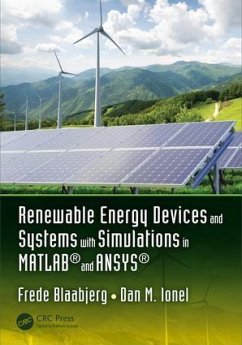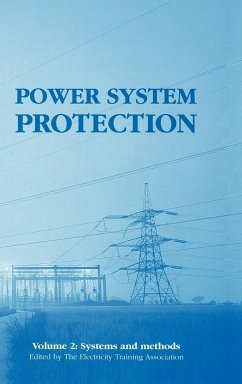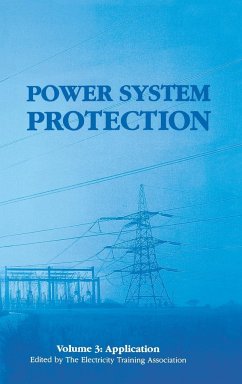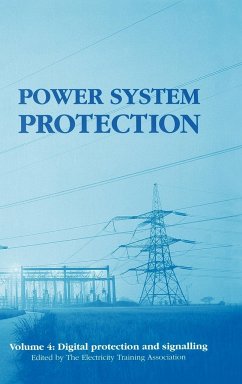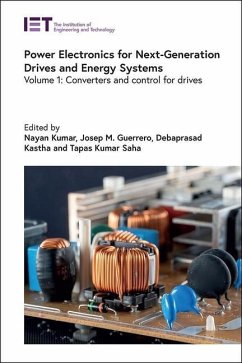Nicht lieferbar
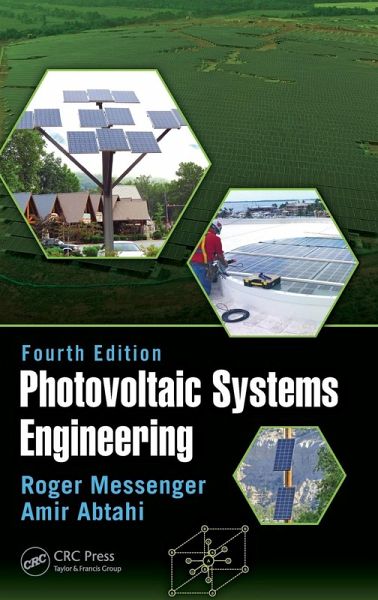
Photovoltaic Systems Engineering
Versandkostenfrei!
Nicht lieferbar




This new edition offers a comprehensive treatment of all phases of Photovoltaic System design, installation, commissioning, inspection, and operation, including why and how the basic system components work on an engineering level. The book also explains the basic physical principles upon which the technology is based and a consideration of the environmental and economic impact of the technology. Content has been completely revised and updated and now includes 10-30 homework problems per chapter. Additionally, there is a solutions manual available for adopting professors.
Roger Messenger is professor emeritus of electrical engineering at Florida Atlantic University in Boca Raton, Florida. He earned a PhD in electrical engineering at the University of Minnesota and is a Registered Professional Engineer, a former Certified Electrical Contractor, and a former NABCEP Certified PV Installer. He has enjoyed working on field installations as much as he enjoys teaching classes or working on the design of a system or contemplating the theory of operation of a system or commissioning a system. His research work has ranged from electrical noise in gas discharge tubes to deep impurities in silicon to energy conservation to PV system design and performance. Dr. Messenger worked on the development and promulgation of the original Code for Energy Efficiency in Building Construction in Florida and has conducted extensive field studies of energy consumption and conservation in buildings and swimming pools. Since his retirement from Florida Atlantic University in 2005, he has worked as vice president for engineering at VB Engineering, Inc., in Boca Raton and as senior associate at FAE Consulting in Boca Raton. While at VB Engineering, he directed the design of several hundred PV designs, including the 5808-module, 4-acre, 1-MW system on the roof of the Orange County Convention Center in Orlando, Florida. While at FAE Consulting, he led the design of an additional 6 MW of systems that were installed. Dr. Messenger has also been active in the Florida Solar Energy Industries Association and the Florida Alliance for Renewable Energy, has served as a peer reviewer for the U.S. Department of Energy, and has served on the Florida Solar Energy Center Advisory Board. He has conducted numerous seminars and webinars on designing, installing, and inspecting PV systems. Homayoon "Amir" Abtahi is an associate professor of mechanical engineering at Florida Atlantic University. He earned a PhD in mechanical engineering from the Massachusetts Institute of Technology in 1981 and joined Florida Atlantic University in 1983. In addition to his academic activity, he has a wealth of practical experience, much of which has been obtained as a volunteer. He is a Registered Professional Engineer in Florida and a member of ASME, IEEE, ASHRAE, and SAE. Dr. Abtahi has held LEED Certification since 2007, is ESTIDAMA Certified in the United Arab Emirates, and is a Certified General Contractor and a Certified Solar Contractor in the state of Florida. His interests range widely from PV to PEM fuel cells, integrated capacitor/battery power modules, and atmospheric water generation. In 1985, he installed the first solar-power system in Venezuela and was responsible for the first application of solar power for post-hurricane emergency power and lighting and Ham radio communication operations in the aftermath of Hurricane Hugo in St. Croix in 1989 and Hurricane Marilyn in St. Thomas in 1995. In 1989, Dr. Abtahi published the first comprehensive catalog of 12-V appliances for use with PV systems. Recently, he has been involved with PV installations in the Caribbean, South America, Bangladesh, and India. From 2008 to 2010, he was responsible for design and installation of over 100 residential and 20 commercial/industrial PV systems. Over the past 15 years, he has had responsibility for the design and installation of 1 million BTUD of solar hot water and solar process heat. Along with PV and thermal applications, he has had experience with heat exchangers, MEP plan review, LEED projects, tracking PV, micro-turbines, parabolic trough solar, and other hybrid applications.
Produktdetails
- Verlag: CRC Press
- 4th edition
- Seitenzahl: 536
- Erscheinungstermin: 7. März 2017
- Englisch
- Abmessung: 241mm x 159mm x 38mm
- Gewicht: 963g
- ISBN-13: 9781498772778
- ISBN-10: 1498772773
- Artikelnr.: 47856817
Herstellerkennzeichnung
Libri GmbH
Europaallee 1
36244 Bad Hersfeld
gpsr@libri.de
Für dieses Produkt wurde noch keine Bewertung abgegeben. Wir würden uns sehr freuen, wenn du die erste Bewertung schreibst!
Eine Bewertung schreiben
Eine Bewertung schreiben
Andere Kunden interessierten sich für





